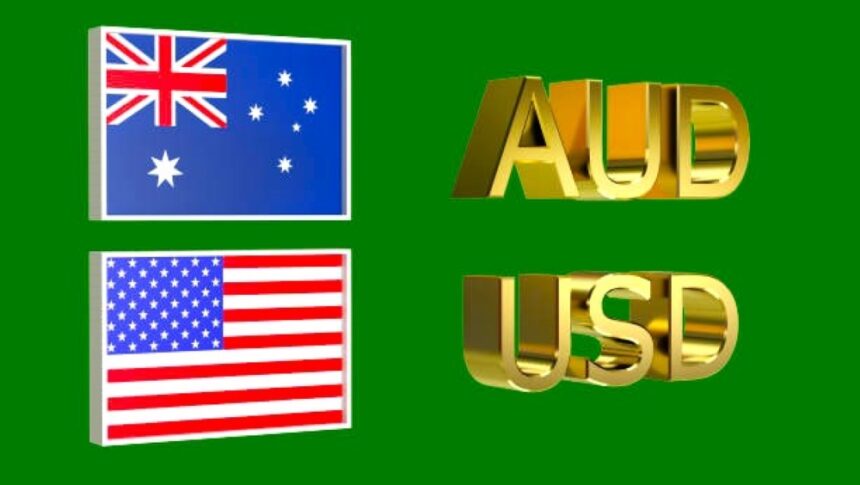Autralian dollar has extended its losses following mixed economic data from China on Friday.
The Australian Dollar (AUD) fell for the second consecutive session, owing mostly to China’s mixed economic statistics issued on Friday. The Aussie Dollar had already been under pressure following the announcement of Australia’s employment numbers on Thursday, which showed a mixed picture. Any economic changes in Because China and Australia are close trading partners, the Chinese economy has the potential to stimulate the Australian market.
The Australian dollar is struggling as the 10-year bond yield has fallen to a monthly low of 4.2%.
The Australian Dollar’s slump is aided by the yield on Australia’s 10-year government bond falling to almost 4.2%, the lowest level in a month. This drop in bond yields is a reaction to the domestic jobs report, which revealed an unexpected decrease in pay growth in the first quarter. The slower wage growth has caused markets to doubt the prospect of any interest rate hikes by the Reserve Bank of Australia (RBA).
The US dollar has recovered as the Fed remains cautious about inflation and anticipated rate cuts in 2024.
The US Dollar Index (DXY), which measures the US Dollar’s (USD) performance versus six major currencies, has recovered from a multi-week low of 104.08 set on Thursday. The Federal Reserve takes a cautious attitude. Regarding inflation and the possibility of rate decreases in 2024. Investors will draw more clues from the statements of Minneapolis Fed President Neel Kashkari and San Francisco Fed President Mary Daly later in the day.
Daily Market Movers: Australian Dollar Declines Following Mixed Chinese Data.
China’s retail sales rose 2.3% year on year in April, down from 3.1% in March and falling short of the predicted 3.8%. This is the 15th straight month of rise in retail activity, however it is the slowest increase in this trend. Meanwhile, industrial production increased 6.7% year on year, above the expected 5.5% and the previous high of 4.5%.
On Thursday, Fed Bank of Atlanta President Raphael Bostic underscored the need for patience with interest rates, adding that strong pricing pressure remains in the US economy. Furthermore, Cleveland Fed President Loretta Mester stated that it may take longer than expected to clearly determine the inflation trajectory, implying that the Fed should retain its restrictive posture for an extended period.
Australia’s Wage Price Index (QoQ) rose by 0.8% in the first quarter, falling short of the market’s expectation of a 0.9% gain. The quarter’s rise is the weakest since late 2022. Furthermore, yearly wage growth slowed to 4.1%, a decrease from the previous 4.2% and below market expectations.
Sarah Hunter, Chief Economist and Assistant Governor (Economic) at the Reserve Bank of Australia (RBA), gave a keynote at the REIA Centennial Congress on Thursday. During her speech, Hunter discussed many potential solutions to the housing supply and demand gap. This is a major issue in Australia, as rising prices, rents, and homelessness provide considerable challenges.
In April, the US Consumer Price Index (CPI) fell to 0.3% month on month, compared to an expected 0.4% reading. Retail Sales remained steady, falling short of the predicted 0.4% increase.
Australian Budget returned to a deficit for 2024-25, following a $9.3 billion surplus in the previous year.
On Tuesday, the Australian Budget returned to a deficit for 2024-25, following a $9.3 billion surplus in the previous year. The Australian government intends to combat headline inflation and ease cost-of-living pressures by devoting billions of dollars to decrease energy bills and rent, as well as attempts to lower income taxes.
According to Reuters, Treasurer of Australia Jim Chalmers expects the current headline inflation rate of 3.6% to revert to the Reserve Bank of Australia’s target range. By the end of the year, the figure should be between 2 and 3 percent. If this scenario plays out, the central bank will most likely contemplate decreasing interest rates earlier than expected.
On Tuesday, Federal Reserve Chair Jerome Powell predicted that inflation will continue to drop. Powell voiced less confidence in the disinflation prognosis than earlier estimates. He also stated that GDP growth is likely to be 2% or higher, citing the labor market’s resilience as the reason for this upbeat estimate.









